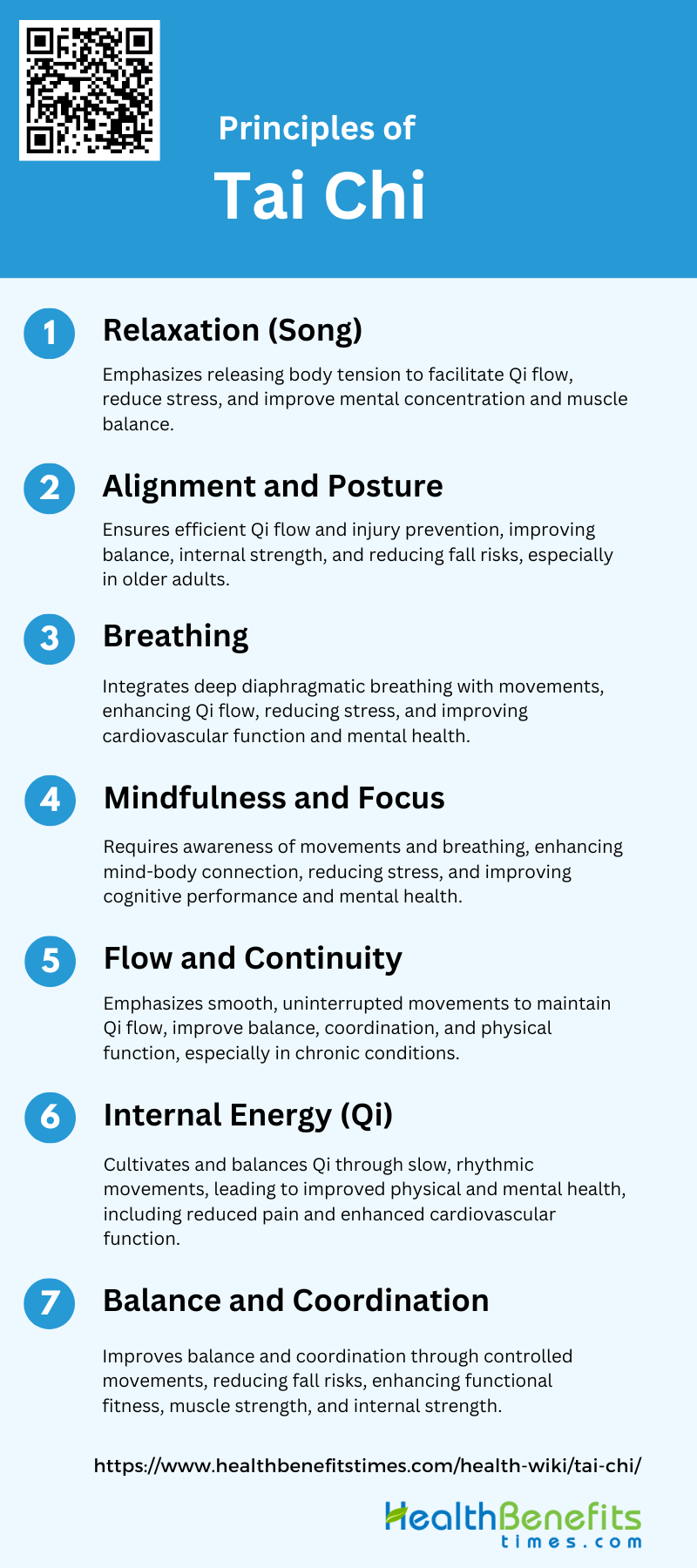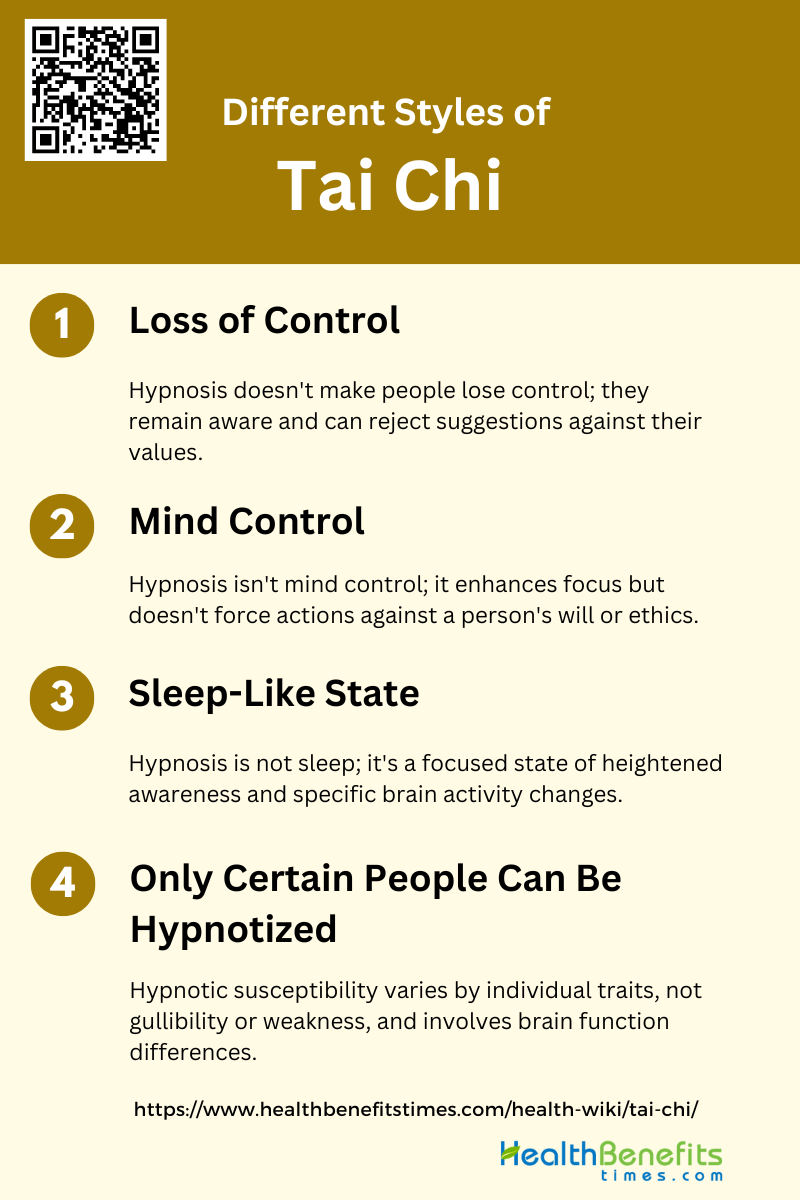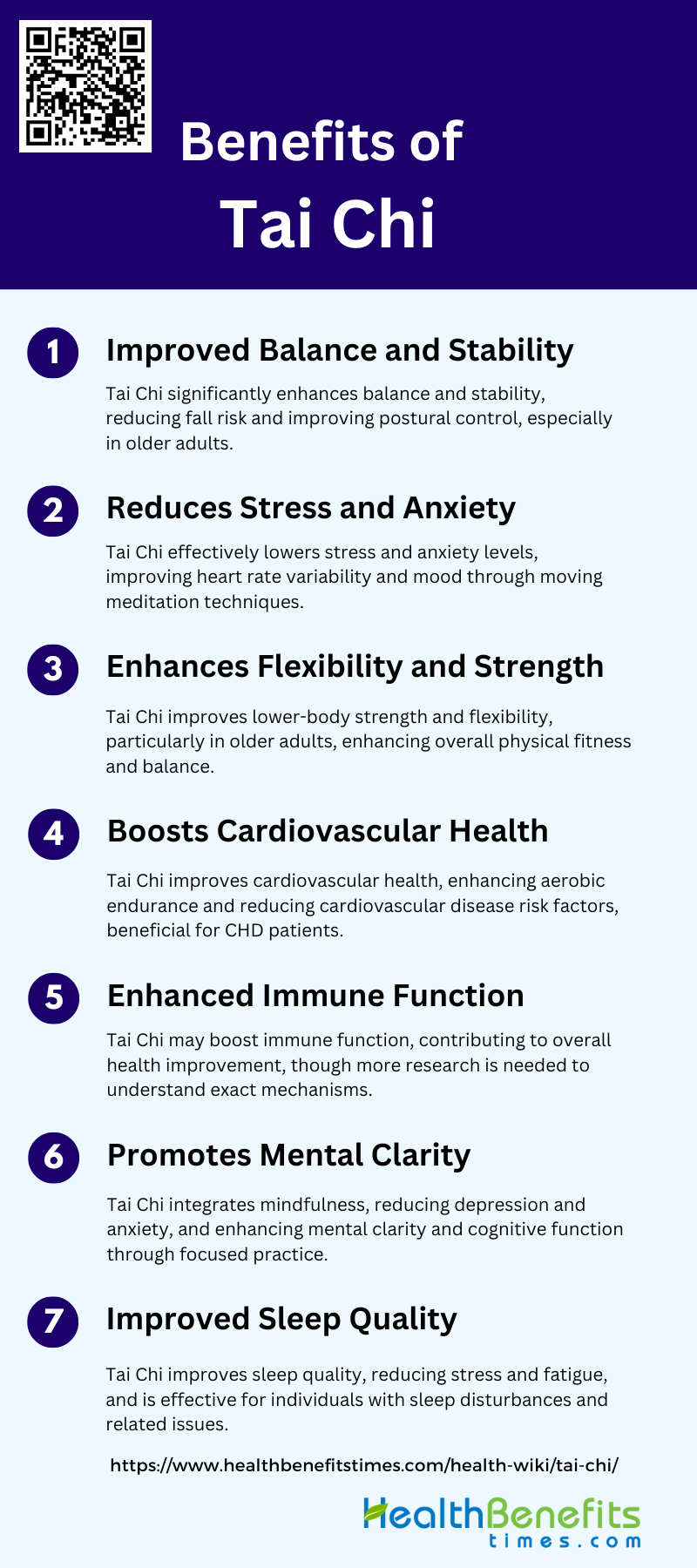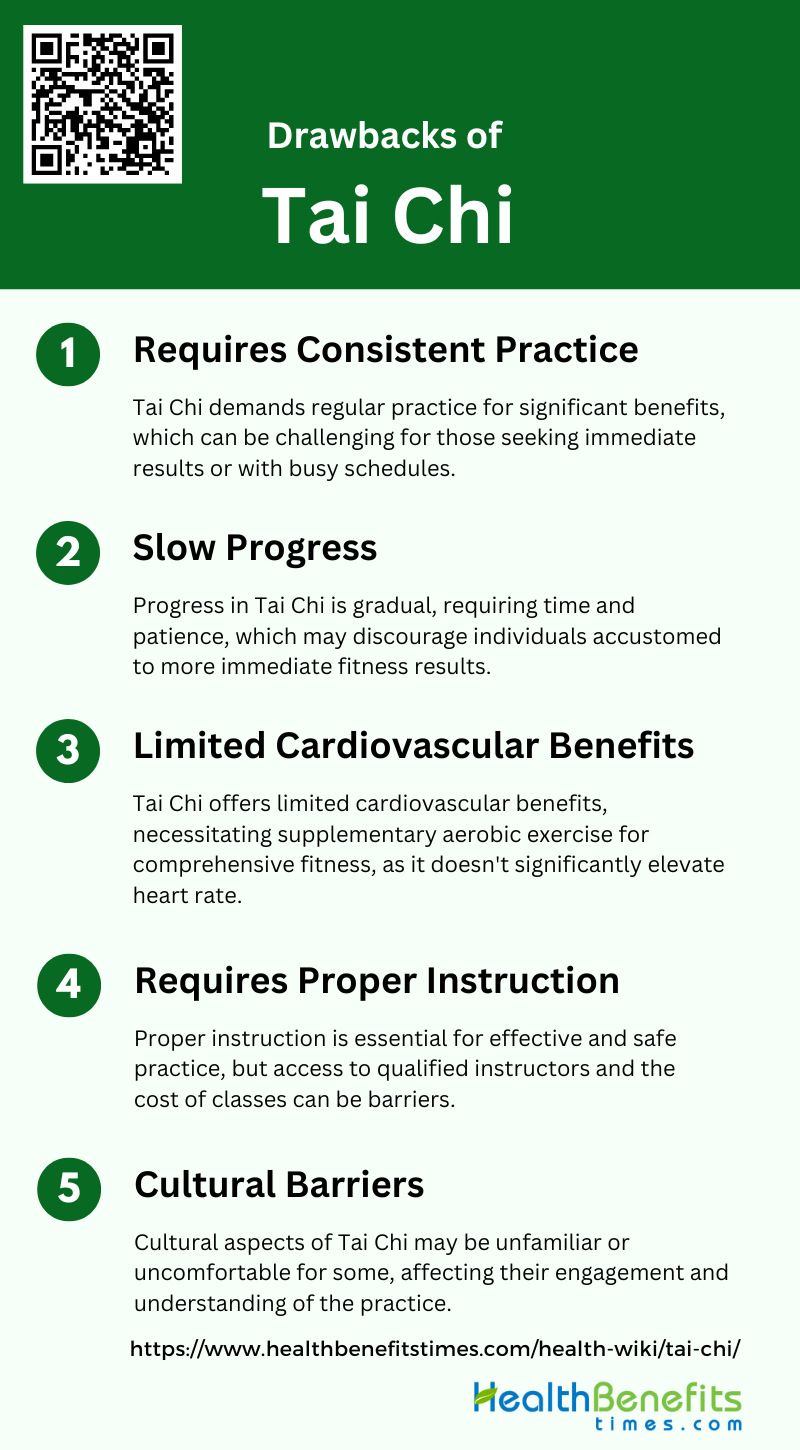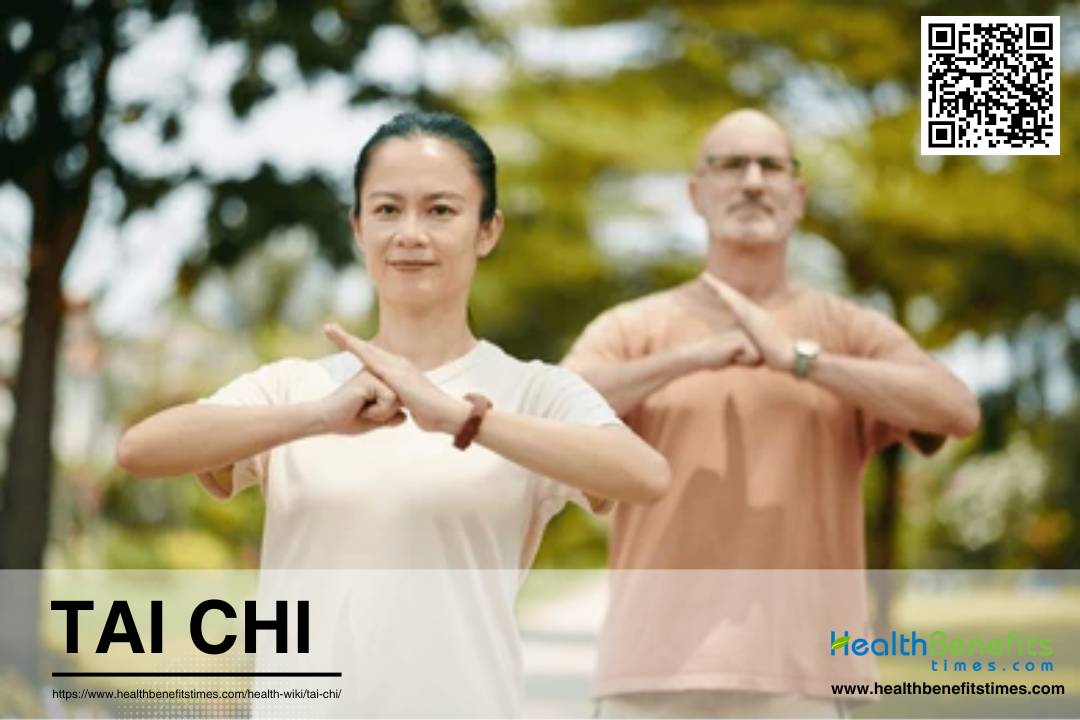 Tai Chi, also known as Tai Chi Chuan, is a traditional Chinese mind-body practice that combines slow, deliberate movements, meditation, and deep breathing. Originating as a martial art, it has evolved into a form of exercise that promotes physical and mental well-being. Tai Chi is characterized by its gentle, flowing movements that are performed in a slow, focused manner, making it accessible to people of all ages and fitness levels. It is widely recognized for its health benefits, including improving balance, flexibility, and strength, as well as reducing stress and enhancing overall quality of life. Tai Chi is also recommended in clinical practice guidelines for managing conditions such as osteoarthritis, depression, and stroke rehabilitation due to its holistic approach to health and wellness.
Tai Chi, also known as Tai Chi Chuan, is a traditional Chinese mind-body practice that combines slow, deliberate movements, meditation, and deep breathing. Originating as a martial art, it has evolved into a form of exercise that promotes physical and mental well-being. Tai Chi is characterized by its gentle, flowing movements that are performed in a slow, focused manner, making it accessible to people of all ages and fitness levels. It is widely recognized for its health benefits, including improving balance, flexibility, and strength, as well as reducing stress and enhancing overall quality of life. Tai Chi is also recommended in clinical practice guidelines for managing conditions such as osteoarthritis, depression, and stroke rehabilitation due to its holistic approach to health and wellness.
History of Tai Chi
Tai Chi, also known as Tai Chi Chuan, has a rich history that dates back to the thirteenth century A.D. when it was devised by Chang San Feng as a mind-body relaxation exercise for meditation and self-defense. The practice of Tai Chi is deeply rooted in Taoist philosophy and the teachings of Lao Tzu, emphasizing the alignment with the Tao, or “the way,” to achieve spiritual unity. Over the centuries, Tai Chi has evolved and diversified into various forms, maintaining its core principles while adapting to different cultural and therapeutic contexts. For instance, a unique Tai Chi form has been developed and successfully implemented in clinical trials, integrating medical qigong to enhance its impact on biobehavioral measures. Despite its ancient origins, Tai Chi continues to be practiced worldwide, celebrated for its potential health benefits and its role in promoting tranquility and holistic well-being.
Principles of Tai Chi
The principles of Tai Chi are rooted in traditional Chinese philosophy and martial arts. Here are some key principles:
1. Relaxation (Song)
Relaxation, or “Song,” is a fundamental principle in Tai Chi that emphasizes the importance of releasing tension throughout the body. This principle is crucial for achieving the fluid, graceful movements characteristic of Tai Chi. Relaxation helps to facilitate the flow of internal energy, or Qi, which is essential for maintaining body homeostasis and overall health. By focusing on relaxation, practitioners can improve their mental concentration and reduce stress, which has been shown to have beneficial effects on psychological well-being, including reductions in depression and anxiety. The practice of relaxation in Tai Chi also contributes to better muscle modulation and balance, enhancing the overall effectiveness of the exercise.
2. Alignment and Posture
Proper alignment and posture are critical in Tai Chi to ensure the efficient flow of Qi and to prevent injury. Maintaining correct posture helps to balance the body and align the movements of different body segments, which is essential for the harmonious execution of Tai Chi forms. Good alignment also aids in the development of internal strength, or neijin, by optimizing the force transmission through the body. Studies have shown that Tai Chi can improve balance and reduce the risk of falls, particularly in older adults, by emphasizing proper alignment and posture. This principle not only enhances physical stability but also contributes to better overall health outcomes.
3. Breathing
Breathing is a core component of Tai Chi, integrated into the practice to enhance the flow of Qi and promote relaxation. Deep diaphragmatic breathing is synchronized with body movements to achieve a harmonious balance between the mind and body. Proper breathing techniques help to regulate the autonomic nervous system, reducing stress and improving mental health. Research has shown that Tai Chi’s emphasis on controlled breathing can lead to significant improvements in heart rate variability and perceived stress levels. This principle is particularly beneficial for individuals with chronic conditions, such as cardiovascular diseases, as it helps to enhance cardiovascular function and overall well-being.
4. Mindfulness and Focus
Mindfulness and focus are integral to Tai Chi, requiring practitioners to maintain a heightened awareness of their movements and breathing. This mental concentration helps to cultivate a state of mindfulness, which has been shown to reduce stress and improve psychological well-being. The practice of mindfulness in Tai Chi also enhances the mind-body connection, allowing for better control of movements and more effective execution of forms. Studies have demonstrated that Tai Chi can improve cognitive performance and mental health, making it a valuable practice for individuals seeking to enhance their overall quality of life.
5. Flow and Continuity
Flow and continuity are essential principles in Tai Chi, emphasizing the importance of smooth, uninterrupted movements. This principle helps to maintain the flow of Qi and ensures that the body remains in a state of constant motion, which is crucial for achieving the full benefits of the practice1. The continuous, dance-like postures of Tai Chi promote balance and coordination, reducing the risk of falls and improving overall physical function. Research has shown that the emphasis on flow and continuity in Tai Chi can lead to better functional capacity and pulmonary function, particularly in individuals with chronic conditions such as COPD.
6. Internal Energy (Qi)
The concept of internal energy, or Qi, is central to Tai Chi, with the practice designed to cultivate and balance this vital energy within the body. Qi is believed to be essential for maintaining health and well-being, and its proper flow is facilitated through the slow, rhythmic movements of Tai Chi. Studies have shown that Tai Chi can enhance the circulation of Qi, leading to improved physical and mental health outcomes. The practice of Tai Chi has been associated with numerous health benefits, including reduced pain perception, improved cardiovascular function, and enhanced psychological well-being.
7. Balance and Coordination
Balance and coordination are key principles in Tai Chi, with the practice designed to improve these aspects through controlled, deliberate movements. Proper balance and coordination help to prevent falls and enhance overall physical stability, making Tai Chi particularly beneficial for older adults. Research has shown that Tai Chi can significantly improve balance confidence and muscle strength, contributing to better functional fitness and reduced risk of injury. The emphasis on balance and coordination in Tai Chi also supports the development of internal strength and the efficient flow of Qi, further enhancing the health benefits of the practice.
Different styles of Tai Chi
Here are some of the most well-known styles of Tai Chi:
1. Chen Style
Chen style Tai Chi is the oldest form of Tai Chi, originating in the Chen village in China. It is characterized by its combination of slow, soft movements and fast, powerful ones, which are believed to embody the principles of yin and yang. This style emphasizes the importance of internal energy (qi) and incorporates complex techniques such as jumps, kicks, and strikes. Research has shown that Chen-style Tai Chi can be effective for stress reduction, although its benefits may be limited by study constraints. Additionally, it has been found to improve motor function in patients with Parkinson’s disease.
2. Yang Style
Yang style Tai Chi is the most popular form of Tai Chi practiced worldwide. It is known for its slow, gentle, and continuous movements, making it accessible to people of all ages and fitness levels. Studies have demonstrated that Yang-style Tai Chi can significantly improve gait parameters and musculoskeletal flexibility in older adults. It has also been shown to enhance sleep quality, particularly in forms such as the 24-form and 8-form Yang style Tai Chi. This style focuses on large, sweeping movements and is often recommended for beginners due to its relatively simple and easy-to-learn forms.
3. Hao Style
Hao style Tai Chi, also known as Wu (Hao) style, is one of the lesser-known forms of Tai Chi. It emphasizes small, subtle movements and internal energy cultivation. This style is particularly focused on precision and control, making it suitable for advanced practitioners. While there is limited specific research on Hao style Tai Chi, it shares many commonalities with other styles, such as the emphasis on internal energy and mindfulness. Practitioners of Hao style often report improvements in balance, coordination, and overall body awareness.
4. Wu Style
Wu style Tai Chi is known for its compact, small-frame movements and high stances, which make it particularly suitable for older adults and those with balance issues. Research has shown that Wu-style Tai Chi can be effective in managing hypertension and hyperlipidemia in middle-aged and elderly patients. This style combines elements of both the Yang and Chen styles, focusing on smooth, flowing movements that promote relaxation and internal energy cultivation. Wu style Tai Chi is often practiced for its health benefits, including improved cardiovascular health and reduced stress levels.
5. Sun Style
Sun style Tai Chi is the newest of the major Tai Chi styles, developed by Sun Lutang in the early 20th century. It is characterized by its high stances and agile, flowing movements, which incorporate elements of Xingyiquan and Baguazhang. This style is particularly known for its suitability for older adults and those with joint issues, as it places less stress on the knees and lower back. Research has indicated that Sun style Tai Chi can be beneficial for improving balance and cognitive function in older adults. It is also effective in managing type 2 diabetes, with different training durations and styles showing variable effectiveness.
Benefits of Tai Chi
Tai Chi offers numerous benefits for both physical and mental well-being. Here are some key advantages:
1. Improved Balance and Stability
Studies indicate that Tai Chi enhances dynamic postural stability, which is crucial for preventing falls and maintaining mobility. For instance, a systematic review found that Tai Chi practice positively impacts balance control and flexibility in individuals with balance and vestibular disorders. Additionally, augmented reality-assisted Tai Chi training has been demonstrated to improve balance control and lower limb muscle strength in older adults, making it a practical intervention for enhancing stability.
2. Reduces Stress and Anxiety
A systematic review and meta-analysis revealed that Tai Chi significantly lowers perceived stress and improves heart rate variability parameters, which are indicators of reduced stress and anxiety. Another study found that Tai Chi, as a form of moving meditation, effectively reduces mental and emotional stress, as evidenced by decreased salivary cortisol levels and improved mood states. These findings suggest that Tai Chi can be a valuable practice for managing stress and anxiety.
3. Enhances Flexibility and Strength
Research has shown that Tai Chi practice leads to improvements in lower-body strength and flexibility, particularly in older adults. For example, a randomized controlled trial demonstrated that Tai Chi significantly improved muscle strength and flexibility in community-living elderly people. Additionally, Tai Chi has been found to increase lower limb muscle strength and improve functional balance, further supporting its role in enhancing physical fitness.
4. Boosts Cardiovascular Health
Tai Chi has positive effects on cardiovascular health, making it a suitable exercise for individuals with coronary heart disease (CHD). A systematic review and meta-analysis found that Tai Chi-based cardiac rehabilitation significantly improves aerobic endurance and reduces cardiovascular disease risk factors. Another study reported that a group- plus home-based Tai Chi program led to significant improvements in physical function and psychosocial well-being among CHD patients, highlighting its potential as a cardiac rehabilitation exercise.
5. Enhanced Immune Function
A systematic review of Tai Chi’s effects on various health outcomes reported benefits for the immune system, suggesting that Tai Chi practice could potentially boost immune function. While the exact mechanisms are not fully understood, the overall improvement in physical and mental health associated with Tai Chi practice may contribute to a stronger immune response.
6. Promotes Mental Clarity
A systematic review of Tai Chi’s health benefits for students in higher education found that Tai Chi practice reduces symptoms of depression and anxiety, and improves interpersonal sensitivity, which can contribute to better mental clarity and cognitive function. The mindfulness aspect of Tai Chi helps practitioners focus their thoughts and reduce mental clutter, leading to enhanced mental clarity.
7. Improved Sleep Quality
A randomized controlled trial found that Tai Chi significantly improved sleep quality among Chinese women with episodic migraine, as measured by the Pittsburgh Sleep Quality Index (PSQI). The study also reported reductions in stress and fatigue, which are common factors that negatively impact sleep. These findings suggest that Tai Chi can be an effective intervention for enhancing sleep quality.
Drawbacks of Tai chi
While Tai Chi offers numerous benefits, it is not without its limitations. Here are some potential drawbacks of practicing Tai Chi:
1. Requires Consistent Practice
Unlike high-intensity workouts that may show quick results, Tai Chi’s slow and deliberate movements require regular engagement to improve physical and mental health. This can be a drawback for individuals seeking immediate results or those with busy schedules who may struggle to commit to daily or weekly sessions. Consistency is crucial for mastering the intricate movements and achieving the desired outcomes, such as improved balance, flexibility, and mental clarity. Without regular practice, the benefits of Tai Chi may be minimal or non-existent.
2. Slow Progress
The progress in Tai Chi can be slow, which might be discouraging for some practitioners. The practice involves mastering a series of complex, flowing movements that require time and patience to perfect. Unlike more vigorous forms of exercise that can quickly enhance physical fitness, the benefits of Tai Chi, such as improved balance, flexibility, and mental well-being, often manifest gradually. This slow progression can be a drawback for individuals who are accustomed to or prefer more immediate results from their exercise routines. The need for patience and long-term commitment may deter some from continuing their practice.
3. Limited Cardiovascular Benefits
While Tai Chi is excellent for improving balance, flexibility, and mental health, it offers limited cardiovascular benefits compared to more intense forms of exercise. The slow, meditative movements do not significantly elevate the heart rate, which is essential for cardiovascular conditioning. For individuals seeking to improve their cardiovascular health, Tai Chi may need to be supplemented with other forms of aerobic exercise, such as running, cycling, or swimming. This limitation can be a drawback for those looking to achieve comprehensive fitness solely through Tai Chi practice.
4. Requires Proper Instruction
Proper instruction is crucial for practicing Tai Chi effectively and safely. The intricate movements and postures require guidance from a knowledgeable instructor to ensure they are performed correctly. Without proper instruction, practitioners risk performing the movements incorrectly, which can lead to injuries or reduced effectiveness of the exercise. Access to qualified instructors can be a barrier, especially in areas where Tai Chi is not widely practiced. Additionally, the cost of classes or personal instruction may be prohibitive for some individuals, making it challenging to learn and practice Tai Chi properly.
5. Cultural Barriers
The philosophical and cultural aspects of Tai Chi, such as its connection to Taoist principles and Chinese martial arts, might be unfamiliar or uncomfortable for people from different cultural backgrounds. This can affect their willingness to engage with the practice fully. Additionally, the terminology and concepts used in Tai Chi instruction may be challenging to understand without a background in Chinese culture or language. These cultural barriers can limit the accessibility and appeal of Tai Chi to a broader audience.


